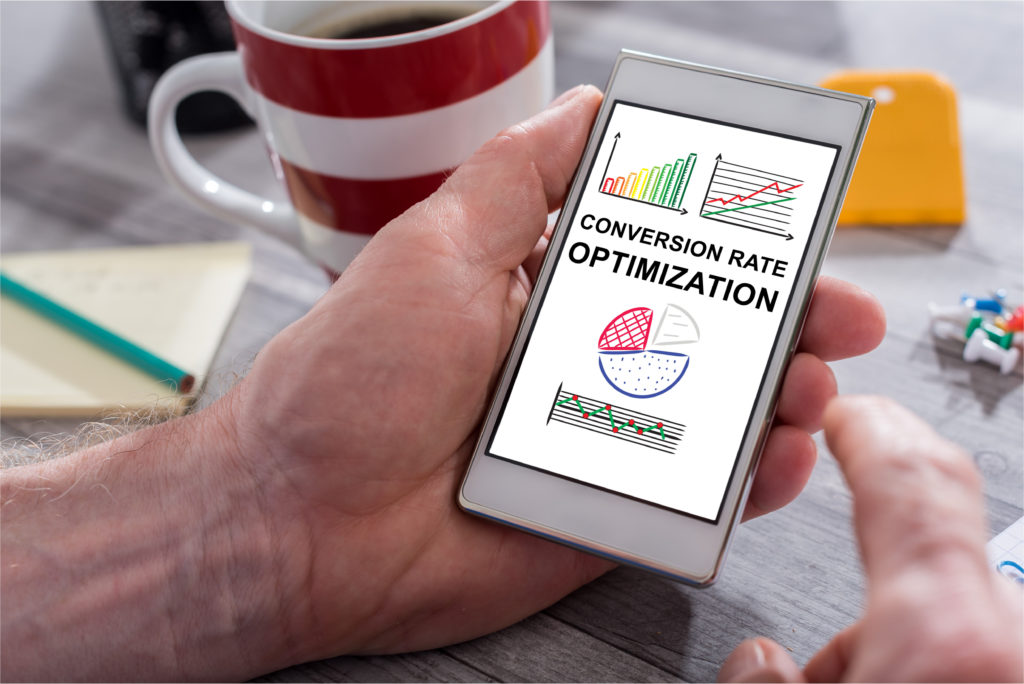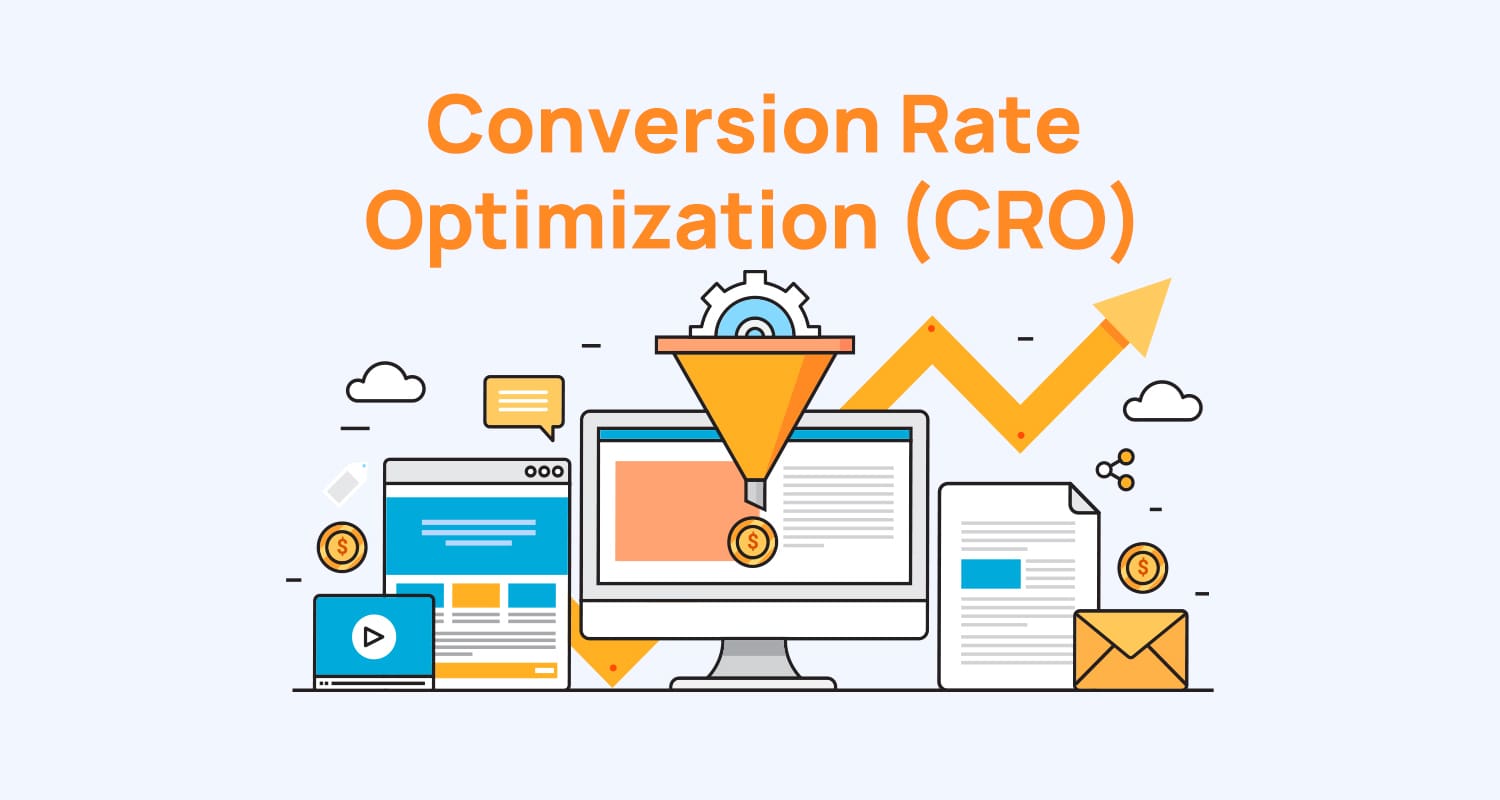What is app conversion rate optimization and how to improve CRO?
One of the keys to a successful app is good conversion rate optimization (CRO), which leads to high conversion rates as people convert from prospects to loyal users and customers. However, it’s important to know what app conversion optimization entails and how to improve it to get the most from it. In this guide, we’ll review what app CRO is and the steps you can take to improve it to get the long-term results you want with your app.
What Is App Conversion Rate Optimization?
App CRO involves optimizing an app experience based on user behavior to improve the chances of users taking the desired action of downloading, installing, and making purchases in an app. Improving CRO for an app can lead to significantly higher conversions that translate into increased revenue.
For example, you might have an app that helps people manage their personal finances. Users could download and install the app for free, followed by subscribing to a premium version that includes additional features to further help with financial management. Based on this clear path toward a sale, you can optimize your app to more effectively drive people toward that subscription.
The key to app CRO is identifying your app’s specific funnel and working to eliminate bottlenecks in it as people move toward the bottom. If you can optimize the funnel, you’ll be able to bring more people through it and see positive ROI with your efforts.

How to Improve CRO
If you want to improve your app CRO, there are several steps you must take for good optimization. These steps are as follows:
1. Determine Which Metrics to Track With Analytics
The very first step you should take is to connect analytics tracking tools to your app, which will enable you to measure the results of your efforts. Using in-depth analytics, you can determine how many users your app has, the number of people who complete certain actions, and generally gauge your campaigns’ performance.
With the right CRO tool, you’ll have a clear idea of how well-optimized your app is and identify any leaks that might be compromising conversions. Tools like Google Analytics for Mobile will give you everything you need to effectively monitor metrics and performance.
Keep in mind that the metrics you look at will depend on the goals you have in place. Some of the metrics or key performance indicators (KPIs) you’ll want to track could include app user engagement, lifetime value, and retention. Unlike conventional CRO for websites and other platforms, you’ll want to avoid looking too closely at click-through rate (CTR), as this metric doesn’t really pertain to app conversions.
Once you’ve connected analytics to your app, you can begin tracking user behavior using events. For instance, whenever a user uses a specific feature in your app, you could label that event based on the feature. Depending on how people interact with your app through events, you’ll get a better idea of how well your CRO efforts are working.
2. Identify Your Specific In-App Funnel
After determining which metrics to track based on your goals, you should use events to help define your app’s funnel, which will enable you to track it. In the process, you’ll be able to paint a clearer picture of the journey users take from the moment they download your app to the time they make an in-app purchase. Along the way, you’ll be able to see where users are dropping off at certain points, along with the number of users who continue moving forward.
For instance, in the aforementioned finance app, the funnel that users might travel down would look something like:
- Users open the app
- Users view the app’s purchase screen where they can subscribe to the premium version
- Users opt to subscribe using the CTA button
- Users make a purchase upon subscribing
Each of these would be tied to unique events using the analytics tool, which would indicate where users are dropping out of the funnel. As you work to improve the efficiency of the funnel, you can try making certain changes.
As an example, your purchase screen that enables users to subscribe might contain certain visual elements or text that describes what users get with the premium version of the app. If this is where people are dropping off, you can launch A/B tests using two variations of text or images to determine which performs best.

3. Conduct Research to See What Works
With your app’s current funnel identified, take some time to conduct some research in your app’s niche. You can analyze competitors, audiences, and the market in general. This will entail looking at your competitors’ app experiences and the leaders in your niche, studying the various best practices and trends within that niche, and determining what users want based on feedback through surveys, chat communication, or other channels.
Based on your findings during this research phase, you can begin determining what you need to do to improve your app’s funnel. Knowing what people respond to within your niche will give you some guidance around purchase user interfaces and other elements of your app. In the process, you’ll be able to engage in more informed A/B testing.
4. Optimize Your App’s Integrations and Tech
In addition to changing content such as messaging, good app CRO will also entail ensuring the app is fully functioning. If your app crashes a lot for users or contains various errors that compromise the user experience, this could be the main culprit behind a low conversion rate.
You can eliminate potential tech issues by regularly conducting user testing and log all in-app data. Using certain tools, you can quickly identify and address any errors and increase the overall stability of your app, which can go a long way in driving conversions. Further, you should take the time to make sure the checkout process is the same for everyone on every platform. For example, you might discover that the UI doesn’t work on every device, or makes it impossible for users to complete the subscription process. In these cases, quality assurance measures would improve these elements to move people more efficiently along the in-app funnel.
5. Use Common Best Practices for App CRO
App CRO has certain best practices that apply to every type of app. Following these will help you keep people moving toward a purchase in addition to the steps involved with your specific app.
One best practice worth implementing is to adhere to Apple’s Human Interface Guidelines, which detail how you can use different colors, layouts, and graphics to your advantage. Although some of the items that Apple discusses pertain primarily to iOS apps, some are valuable for every platform. For instance, you’ll want to consider your app’s aesthetic integrity, consistency, feedback, user control, and direct manipulation.
Another general rule of thumb is to make the distance from initial app use to purchase as short as you can. This involves taking the time to A/B test different messaging, onboarding processes, lead nurturing, and in-app tutorials to ensure people move from first-time users to committed customers. As you experiment, you’ll find out what works and what doesn’t until you’ve created the perfect funnel.
6. Complete the Process by Analyzing the Results of A/B Tests
After running A/B tests to optimize the in-app funnel, develop a summary of the results. Potential results to analyze include:
- Targeting
- Test duration
- Conversion rates
- The original design and variants
- The improved performance of the variant
- Statistical significance of the test results
When conducting A/B tests, it’s important to bear in mind that the outcome must be statistically significant to indicate whether the variation or original design performed the best. If you don’t find statistical significance, any difference might mean the result is inconclusive. Also, remember that it’s best to run A/B tests one at a time to prevent confusion and a lack of clarity about what’s working.
7. Be Patient
Like any other optimization process, app CRO takes time to yield results. When engaging in testing and monitoring your funnel, understand that any changes you implement may take as long as weeks or months to generate results. However, persistence is key here. If you notice that certain changes aren’t getting the results you want, keep looking for new ways to work toward improving conversions. With enough effort, you’ll begin to profit as you lead more users toward a purchase.
Experience the Benefits of Good App CRO With the Right Process
If you’re currently unhappy with the kinds of results your app is getting, implementing good CRO practices can significantly improve your app’s performance. Combined with other efforts, CRO will streamline your in-app funnel and help make sure users become satisfied customers. With increased conversions also comes an increase in loyal users who are more likely to make repeat purchases and continue using your app. This means that improved CRO can maximize your mobile app revenue in the long run.
___
by cansu
source: AppSamurai
